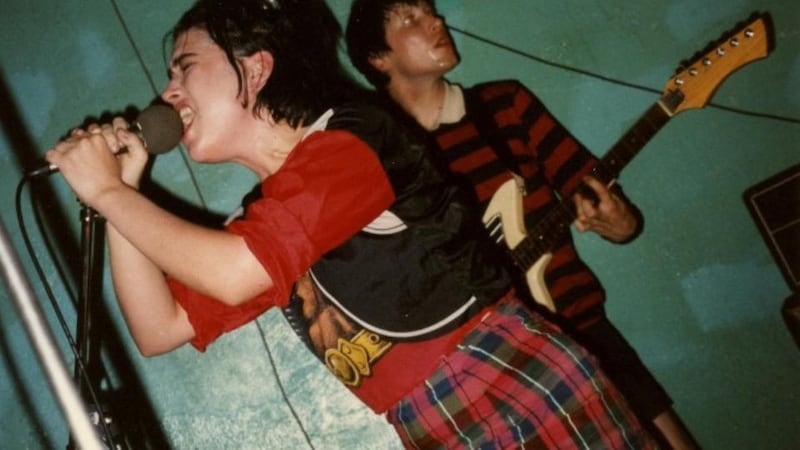Think of the 1990s and a few images are inescapable. Kurt Cobain, both slob and androgyne, looking messed-up yet put-together with bleached bedhead, a laddering stripy jumper and his wife's sunglasses. His friend Kathleen Hanna, a feminine-feminist hybrid who subverted the "sexy schoolgirl" trope onstage with her band Bikini Kill, all check skirts, knee socks and baldly apparent bodily autonomy.
In film, cult teen flicks Clueless and The Craft come to mind, the former a covert ode to Calvin Klein and Alaia, the latter a mixture of preppiness and grunge in a story of malicious teen witches.
In fashion, the decade was about grunge first and foremost, but also sleek minimalism of the kind popularised by designers such as Calvin Klein and Helmut Lang. Then, there is the out-loud sassiness popularised by Versace, all gold hardware and acidic Miami prints. And sportswear's Lycra and logos renaissance. Heroin chic. Supermodels. And, lest we forget, dungarees with one strap undone.

Fashion movements
Every single one of these fashion movements – bar the undone dungarees – is enjoying a resurgence. Grunge is so often dissected that it almost doesn't need mentioning, but it would be rude to leave it out. The grunge uniform of the uniformly disaffected was a subcultural statement of intent until its style motifs were co-opted by Marc Jacobs in 1992 for his first Perry Ellis collection. The flannel shirts of Seattle musicians were transformed into unaffordable plaid silks worn by beanie-hatted catwalking waifs.
Logomania is another 1990s trend that is back on top. Any consumer can buy high at Alexander Wang with a "Parental Advisory" sheer-panelled sweatshirt, or low at Asos.com in simple white cotton. The high priest of designer logos, Calvin Klein, has even reissued nine verging-on-classic 1990s pieces from Calvin Klein Jeans through luxe etailer MyTheresa.com. The campaign images feature Lottie Moss, the younger, more doe-eyed sister of the original Calvin Klein girl, Kate Moss. The reproductions aren't totally faithful, however: modern technology means that the seat will no longer fall shapelessly out of Calvins after a few wears, rendering saggy bottoms a thing of the past.
Calvin Klein is partially responsible for another 1990s trend. Minimalism – in the very sleek, strappy, elegant 1990s sense – has permeated deeply into the current fashion consciousness. Swedish high-street brand Cos draws devotees in large numbers, attracted by the prospect of a serene Jil Sander-ish coat at a non-Sander-ish price, or a Helmut Lang-alike dress, or a Comme des Garçons-esque pair of trousers. Block colours, mostly in black, and a splash, perhaps, of navy, white or camel are the only tonal necessities.
It turns out the precious ore of 1990s minimalism and grunge is just another trend to be dissected and commercially sucked dry. Both are easy to draw inspiration from, easy to manufacture and even easier to wear.
The 1990s are so evocative, especially for people who wield discretionary spending power: upwardly mobile twentysomethings and teens raised on Tumblr. Online, riot grrls and Spice Girls are bracketed together by women and men who aspire to look like both, without any apparent irony, the results of which can be seen on the catwalk with London labels Meadham Kirchhoff and Ashish.
We are in the throes of what the Germans call Sehnsucht, a sort of nostalgia for a place that may not exist or a time period we thought we could never experience fully. The 1990s fashion wave is a chance to experience the decade again, if only in the most tenuous way.










